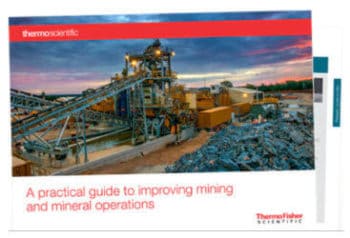 Editor’s Note: In April, folks from around the world celebrated Earth Day by demonstrating support of issues pertaining to the environment. This year’s theme promoted by Earthday.org, was “Invest in our Planet.” The organization believes that every day should be Earth Day, so we will continue to offer information throughout the year that addresses how to reduce environmental hazards in mining.
Editor’s Note: In April, folks from around the world celebrated Earth Day by demonstrating support of issues pertaining to the environment. This year’s theme promoted by Earthday.org, was “Invest in our Planet.” The organization believes that every day should be Earth Day, so we will continue to offer information throughout the year that addresses how to reduce environmental hazards in mining.
One of those earthly issues on the minds of mining operators are tailings – those mineral waste products produced by mining operations — that could contain ions, oxides, arsenic, mercury, and other hazardous elements. These are considered pollutants and in time, may become an issue of environmental and health concerns.
During processing of the ore, tailings may be dumped in or near water or transported by wind or water and can contaminate the surrounding area. Mine sites typically manage tailings by constructing ponds secured by dams; unfortunately sometimes those leak and cause environmental harm.
The Global Industry Standard on Tailings Management sets a precedent for the safe management of tailings facilities, towards the goal of zero harm. According to Global Tailings Review, the “Standard was developed through an independent process – the Global Tailings Review (GTR) –which was co-convened in March 2019 by the United Nations Environment Programme (UNEP), Principles for Responsible Investment (PRI) and International Council on Mining and Metals (ICMM) following the tragic tailings facility collapse at Brumadinho, Brazil, on 25 January 2019.”
The ICMM, which believes the Standard aims to prevent catastrophic failure and enhance the safety of mine tailings facilities across the globe, reported that “all ICMM members are committed to implement the Standard. All tailings facilities operated by members with ‘extreme’ or ‘very high’ potential consequences will be in conformance with the Standard by 5 August 2023. All other tailings facilities operated by members not in a state of safe closure will be in conformance with the Standard by 5 August 2025.”
Another incentive for monitoring tailings: revenue. We previously wrote that some mining companies are figuring out ways to turn tailings to profits with novel reprocessing technologies to extract valuable metals from the waste. The U.S. Geological Survey found that discarded mine tailings may yield significant amounts of rare earth elements. Several efforts are underway to extract gold and copper from tailings. This past December, the USGS released a report on the Assessment of resource potential from mine tailings using geostatistical modeling for compositions for an historic Arizona mine site.
According to the report, “tailings may offer potential as secondary sources of critical elements (CEs), including rare earth elements (REEs), which may have been overlooked during primary production and processing. Therefore, treating mine tailings as a resource has economic and environmental benefits by reducing the waste from new and historical mine sites through remining. One of the critical steps for taking advantage of these benefits is to spatially quantify the resources and the pollutants, which require the application of adequate data analysis and modeling methods, often to compositional geochemical data. Utilizing adequate methods is especially important for correctly quantifying resource potential, as the quantities will often be at low concentrations.”
To accurately identify minerals within tailings, geologists can utilize portable XRF analyzers in-situ to provide fast, accurate analysis of tailings to quickly and easily gauge the efficiency of extraction and enrichment processes. The real-time assay data provided by a portable XRF analyzer allows for timely process adjustments, improving productivity and reducing the need for reprocessing.
These XRF analyzers can also help simplify onsite contaminant screening. In-Situ soil screening can be done with portable XRF analyzers to achieve rapid, qualitative, and semi-quantitative soil testing results to quickly profile contaminant levels and determine remediation boundaries. They can provide immediate identification and accurate characterization of the eight Resource Conservation and Recovery Act (RCRA) metals. The analyzers can also be used for Ex-Situ soil analysis to test bagged or prepared soil samples to gain a more homogenized, representative sample from the collection site. Lastly, the XRF technology can be used to monitor and adjust remediation efforts on-the-spot, eliminate failed clearances, and minimize hazardous waste treatment and disposal by identifying materials that may require Toxicity Characteristic Leaching Procedure (TCLP) analysis.
Last Fall, the ICMM published a Tailings Reduction Roadmap which lays out innovative approaches and solutions they say are capable of significantly reducing tailings from the mine life cycle, as part of a broader Tailings Innovation Initiative. It could be a nice step to investing in our planet.


Leave a Reply